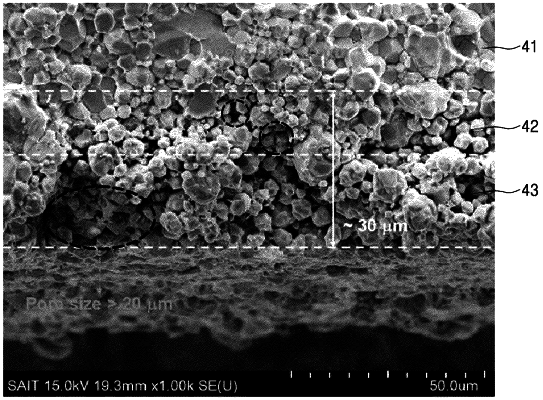| CPC H01M 10/0562 (2013.01) [H01M 10/0525 (2013.01); H01M 50/403 (2021.01); H01M 50/431 (2021.01); H01M 50/449 (2021.01); H01M 50/491 (2021.01); H01M 2300/0068 (2013.01); H01M 2300/0094 (2013.01)] | 35 Claims |

|
1. A solid electrolyte comprising:
an inorganic lithium ion conductive film; and
a porous layer on a surface of the inorganic lithium ion conductive film,
wherein the porous layer has an inner surface facing the inorganic lithium ion conductive film and an opposite outer surface, and an amount of protons on the outer surface of the porous layer is greater than an amount of protons inside the porous layer,
wherein the porous layer comprises a first porous layer and a second porous layer, and the second porous layer is disposed between the inorganic lithium ion conductive film and the first porous layer,
wherein the first porous layer has a pore size which is greater than a pore size of the second porous layer, and
wherein the first porous layer comprises a first inorganic lithium ion conductor substituted with about 2% to about 100% protons, and the second porous layer solid electrolyte comprises a second inorganic lithium ion conductor substituted with about 0.01% to about 20% protons, based on the total number of protons and lithium ions.
|